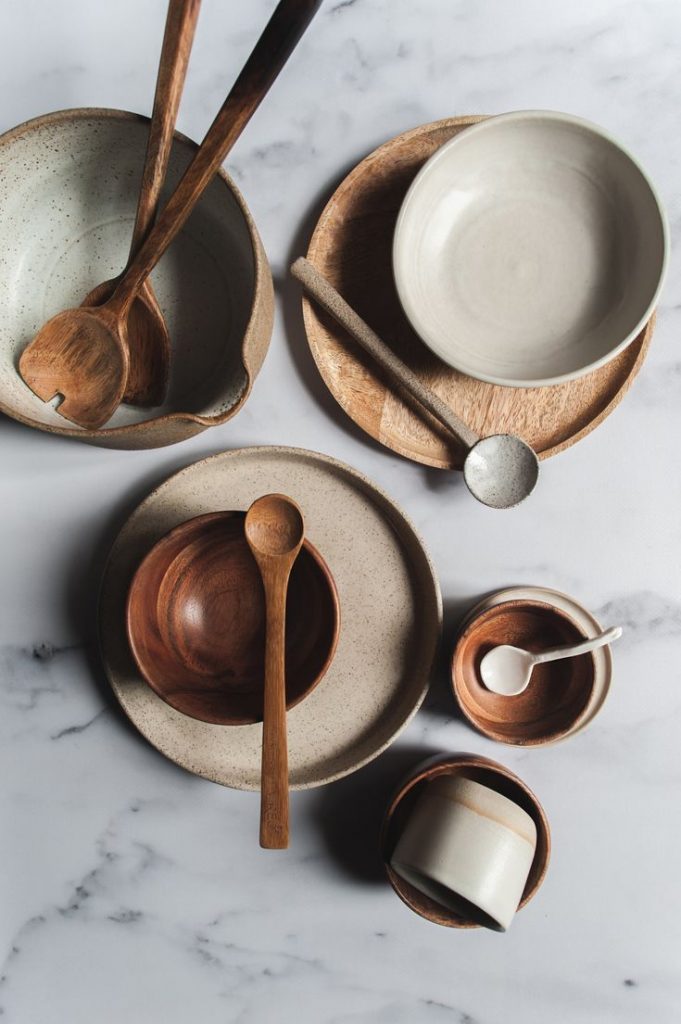Table of Contents
Using the right props and backdrops in food photography can enhance the visual appeal of your dishes and help tell a compelling story. Here’s a list of 15 best props for food photography:
Best props for food photography
- Plates and Bowls:
- Choose a variety of plate and bowl styles to suit different types of dishes. Consider different shapes, sizes, and colors.
- Cutlery:
- Include forks, knives, and spoons to add a touch of elegance. Vintage or unique utensils can also bring character to your composition.
- Napkins and Linens:
- Use fabric napkins or tablecloths to add texture and color to your scene. Linens can also help in creating a sense of context or theme.
- Glassware:
- Wine glasses, tumblers, or mason jars can be used to showcase beverages. Condensation on the glass can add a refreshing feel.
- Herbs and Spices:
- Fresh herbs or a sprinkle of spices can add a pop of color and reinforce the flavor profile of the dish.
- Cooking Utensils:
- Wooden spoons, spatulas, or whisks can convey a sense of cooking and preparation. They add a touch of authenticity to the scene.
- Chopping Boards:
- Wooden, marble, or slate cutting boards provide a sturdy and visually interesting surface for presenting food.
- Kitchen Towels:
- Folded or draped kitchen towels can add a cozy, homey feel to your food photography.
- Fresh Ingredients:
- Display some of the raw ingredients used in the dish. This not only adds visual interest but also communicates the freshness of the meal.
- Candles:
- Use candles to create a warm, inviting ambiance. Beeswax or dripless candles are ideal to avoid mess.
- Salt and Pepper Shakers:
- Elegant or unique salt and pepper shakers can be both functional and decorative in food styling.
- Background Textures:
- Consider incorporating textured surfaces like rustic wood, metal, or stone for an interesting background.
- Vintage Props:
- Antique or vintage items like old silverware, teacups, or serving trays can add a touch of nostalgia to your composition.
- Greenery and Plants:
- Sprigs of herbs or potted plants can add a fresh, organic element to your food photography.
- Unique Tableware:
- Experiment with unconventional tableware like slate platters, wooden trays, or ceramic dishes to add personality to your setup.
The Role of Props and Backdrops in Food Photography

Props and backdrops are powerful tools in food photography. They add context, character, and visual interest to your shots, helping you tell a compelling story.
food props for photography

When choosing food props for photography, consider the theme, mood, and cuisine of the dish. Here are some popular prop categories:
- Utensils: Select elegant cutlery, vintage utensils, or rustic flatware that complements the dish.
- Tableware: Plates, bowls, and glasses should match the style of the cuisine. Fine china for gourmet dishes or wooden plates for a rustic touch.
- Napkins and Linens: Use textured napkins, placemats, or tablecloths to add depth and interest to your composition.
- Decorative Elements: Consider adding fresh flowers, herbs, or decorative elements that relate to the dish’s ingredients or culture.
- Cookware: Include pots, pans, or baking dishes that were used to prepare the dish, offering a behind-the-scenes perspective.
- Books and Journals: Incorporate cookbooks, recipe journals, or newspapers for a cozy, homely atmosphere.
Styling Your Props

Once you’ve selected your props, it’s time to arrange and style them:
- Color and Texture: Ensure that your props complement the colors and textures of your dish. For example, use bright, colorful props with a fresh salad and rustic, textured props with a hearty stew.
- Balance: Don’t overcrowd the frame with too many props. Create a balanced composition by selecting a few key elements.
- Storytelling: Props should contribute to the story you’re telling in your photo. A fork placed next to a cake suggests a bite about to be taken, while a cookbook implies the dish’s recipe.
Choosing Backdrops in Food Photography
Backdrops set the stage for your food photography. They can be simple or elaborate, but they should always complement the dish.
- Wooden Surfaces: Wooden backdrops add warmth and rustic charm, suitable for a wide range of dishes.
- Marble Slabs: Marble backdrops offer elegance and work well with desserts, baked goods, and gourmet dishes.
- Fabric Textures: Experiment with various fabric textures, such as burlap, linen, or silk, to create a rich, inviting environment.
- Minimalist Settings: A plain, clean background, such as a white or gray surface, can make your food the star of the show, ideal for high-contrast shots.
- Outdoor Backdrops: Consider taking your food photos outside to capture the beauty of natural settings, gardens, or outdoor dining scenes.
Prop and Backdrop Placement
The way you position your props and backdrops can greatly impact the composition of your food photos:
- Foreground Elements: Place props in the foreground to add depth and dimension to your shots.
- Layers: Experiment with layering props and backdrops to create visually interesting compositions.
- Framing: Use props to frame your dish, drawing the viewer’s eye toward the main subject.
- Leading Lines: Arrange props and backdrops to create leading lines that guide the viewer’s gaze through the photo.
As with other aspects of food photography, practice and experimentation are key. Try different props and backdrops to discover what works best for your unique style and the dishes you’re capturing.

